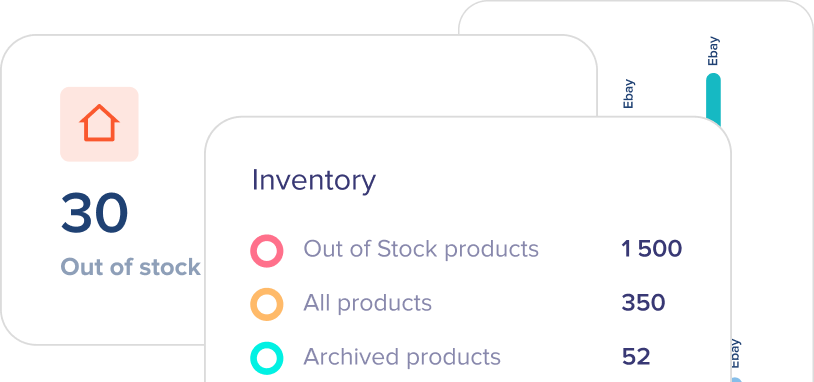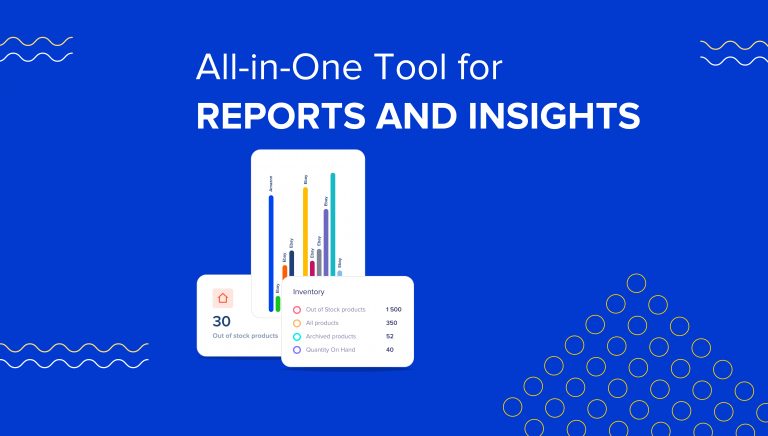A reorder point is the minimum inventory level for a specific product. At this point you are prompted to reorder additional inventory.

If everything runs smoothly with your purchase process and supplier fulfillment, the replacement inventory should arrive just before the last on-hand inventory is sold out. Consequently, production and fulfillment processes are not disrupted, and total stock on hand is reduced.
Why does reorder point matter?
For businesses, it is crucial to know when to order extra inventory to avoid issues like overstocking and understocking.
With overstocking, you may have the risk of additional storage expenses.
With understocking, you will not be able to meet the demands of your clients precisely, which can affect your business by delaying or canceling orders, losing customers, and damaging your brand.
As you can see, in both scenarios, your revenues and overall brand reputation can be drastically affected. Here is where you will need strategies and tools for a reorder point.
By setting a reorder point, you will optimize your inventory. In addition, you can replace each item stock at the appropriate moment, and fulfill market demand without running out of stock.
Reorder points will help you minimize costs and expand financial flexibility by retaining the bare minimum of goods on hand without running out of inventory.
Reorder point formula | How to calculate it?

Various goods have varied sell-through rates; therefore, you might need to order each item independently. To identify the reorder points for each product, eCommerce retailers can use the following ROP formula:
Demand during lead time + Safety stock = Reorder point (ROP)
Now, let’s break it into more details.
Lead Time and Lead Time Demand
When calculating the reorder point for each item, it is crucial to pay attention to lead time. You should figure out the time it takes for your vendor to complete your order.
Lead time is essentially the time it takes to place a purchase order with your manufacturer or supplier and receive the product.
In different cases, the lead time can vary. For instance, the lead time will be significantly longer if your supplier is located overseas. On the other hand, lead time demand is a measurement of consumer demand for a specific item throughout a lead time. In other words, it gives you a fundamental understanding of how many customers want to buy a particular product during the delay between ordering the product and getting it in stock. It is essential to fully understand the peculiarities of lead time demand to use reorder point formula accurately.
Lead time demand formula

So, to find out the demand for lead time, all you have to do is multiply the lead time (in days) for the product by the average number of units sold per day.
Lead time Demand = Lead Time * Average Daily Sales
Knowing the usual demand for a product isn’t enough. It is also crucial to make sure that you maintain a safety stock, or the quantity of excess stock you retain in your inventory to avoid stockouts.
Keep in mind that demand for products or issues related to suppliers may spike unexpectedly, which can become obstacles for refilling inventory.
Your safety stock should be able to adjust to any fluctuations in demand and lead times. You should ensure that you have enough stock on hand to withstand any unforeseen events.
Considering the peculiarities of safety stocks is especially important when selling seasonal products or items. Some products may sell well during certain seasons. However, there may be less demand for them after that. Therefore it is crucial to find a perfect balance to meet high demand throughout the peak season and reduce the safety stock level again after that.
To determine the appropriate level of safety stock for a particular product, use the following formula:
Safety stock level = (Maximum daily orders x maximum lead time) – (average daily orders x average lead time)
What does ROP mean in inventory?
When it comes to inventory management, the reordering point is crucial.
By ensuring that there is always the adequate product in your warehouse, you may save money on storage. This will also help you avoid stockouts, overstocking, and lost sales.
With modern inventory management systems like eSwap having complete control over your stock is easier than ever before. Instead of calculating the abovementioned calculations repeatedly for each product, it is much more efficient to use software that will complete everything much more smoothly and swiftly.
With eSwap you will monitor all of your inventory on one screen and have a quick overview of your inventory by the warehouse. Using software will help you save time by reducing the number of manual processes.
The warehouse inventory management software will allow you to track and manage all inventory movements across your supply chain and warehouses, such as picking, packaging, shipping, and receiving new stock, among other things.
The advanced features of eSwap will allow you to manage the supply of your product variants individually. Therefore you will be able to sell versions and receive reports for each product variant separately. Moreover, you will create a purchase order to replenish some product versions with a new supply.
Eswap’s platform assists in inventory management and forecasting and creates robust analytical reports that cover all aspects of your organization. Additionally, you will also receive information on out-of-stock or low-stock items.







